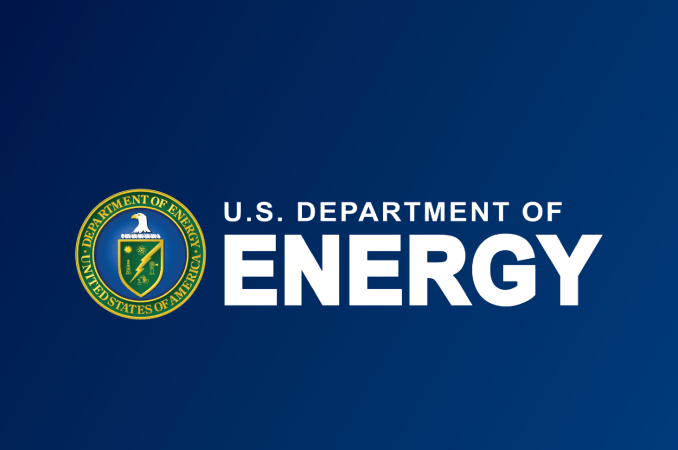
Energy has been weaponized by Russia since the beginning of their aggression in Ukraine. While the Kremlin used natural gas supplies to deter opposition to its invasion in Europe, Russian forces have directly targeted energy infrastructure in Ukraine to deprive millions of heating and power almost daily during the heart of winter. Russia’s war has also posed serious risks to nuclear security. The U.S. Department of Energy (DOE) responded quickly to these acts of coercion through technical advice, direct delivery of needed emergency equipment to Ukraine, and cooperative work with Europe and the rest of the world to mitigate Russia’s malign actions. Short summaries of that support follow.
Electrical Equipment: DOE has shipped high voltage electrical infrastructure components to Ukraine since December 2022. Working with industry, U.S. utilities, and in consultation with DOE’s National Laboratories, the Department identified, procured, and shipped nearly 20 tons of electrical equipment on U.S. Air Force cargo planes to help Ukraine’s electric grid and associated essential services.
Support, Coordination, and Cooperation: DOE coordinated international collective actions and marshalled U.S. resources to stabilize global energy markets, assess risks and vulnerabilities to Ukraine’s energy system, and reduce nuclear risks.
Strategic Oil Releases: DOE led the effort to help stabilize global energy prices in the aftermath of the invasion. In March 2022, the Department coordinated the unprecedented release of one million barrels a day for six months from the U.S. Strategic Petroleum Reserve (SPR) at the President’s direction. Led by Secretary Granholm, the United States and 30 other Member Countries of the International Energy Agency (IEA) also approved two collective actions of emergency oil releases for a combined amount of 182.7 million barrels.
National Labs Analysis: DOE’s National Laboratories have conducted multiple technical assessments to aid Ukraine. From identifying electrical components that are compatible with Ukraine’s grid to conducting analysis on vulnerabilities and contingencies, lab expertise has ensured that U.S. taxpayer money has been put to the best use possible to aid Ukraine’s energy security, resilience, and nuclear security.
International Cooperation on Ukraine: In coordination with the U.S. interagency, DOE has helped Ukraine’s energy sector in the IEA, the G7, the G20, the OECD, the 2022 Paris Donor’s conference, and others to ensure energy aid is coordinated and achieves maximum effectiveness.
Nuclear: From the outset of Russia’s unprovoked invasion of Ukraine, the Department of Energy’s (DOE) Office of Nuclear Energy (NE) and National Nuclear Security Administration (NNSA) have undertaken a wide range of activities to reduce nuclear risks in Ukraine.
Bilateral Capacity Building: DOE’s National Nuclear Security Administration provided bilateral capacity building and training to Ukrainian partner agencies. Training included courses on aerial radiological measuring, atmospheric plume modeling, countering unmanned aerial systems, counter nuclear smuggling, cybersecurity, insider threat mitigation, medical management of radiation injuries, radiological search, source recovery, consequence management, and radioactive material identification and response.
Emergency Operations Center Exchanges: The DOE Emergency Operations Center has established direct communications channels with the emergency operations centers of Ukrainian partner agencies to provide real-time assistance in the event of a nuclear emergency, exercise, or planning activity.
Remote Monitoring Capabilities: DOE/NNSA’s Nuclear Emergency Support Team (NEST) continuously monitors data from radiation detection sensors in Ukraine and the region to ensure real-time situational awareness of the status of Ukraine’s nuclear facilities. Sensor data would provide early warning of an emergency at these facilities and allow DOE/NNSA scientists to provide critical technical guidance to Ukrainian partners to inform measures to protect public health and safety.
Risk Mitigation at Nuclear Power Plants: Ukraine’s Nuclear Power Plants (NPP) provided nearly 50% of the pre-conflict energy generation capacity in Ukraine and are currently relied upon heavily for electricity generation in Ukraine. NE and NNSA provide critical assistance to bolster Ukraine’s capacity to continue safe and secure operations at its NPPs and to protect other nuclear and radiological assets. Specifically, NE and NNSA have assisted with equipment for emergency grid infrastructure repair, personal protection, nuclear and radiological material security assistance, support vehicles, emergency diesel generators, and procurement of diesel fuel and consumables.
Oil and Gas: DOE is working with industry to identify oil and gas infrastructure equipment that can support Ukraine. In early February, DOE coordinated the delivery of a donation of gas infrastructure pieces from industry. In partnership with the U.S. interagency, Department plans to continue outreach to industry to identify additional equipment for Ukraine.
International Coordination on natural gas in Europe: DOE and the interagency supported President Biden’s decisive action last March to create the joint U.S.-European Commission Task Force to reduce Europe’s dependence on Russian fossil fuels and strengthen European energy security. Relatedly, DOE championed the creation of a new IEA Taks Force on Gas that met in mid- February with ministers from over 40 countries, and co-chaired by Secretary Granholm, to consider additional gas savings measures, and accelerate decarbonization in the region.






